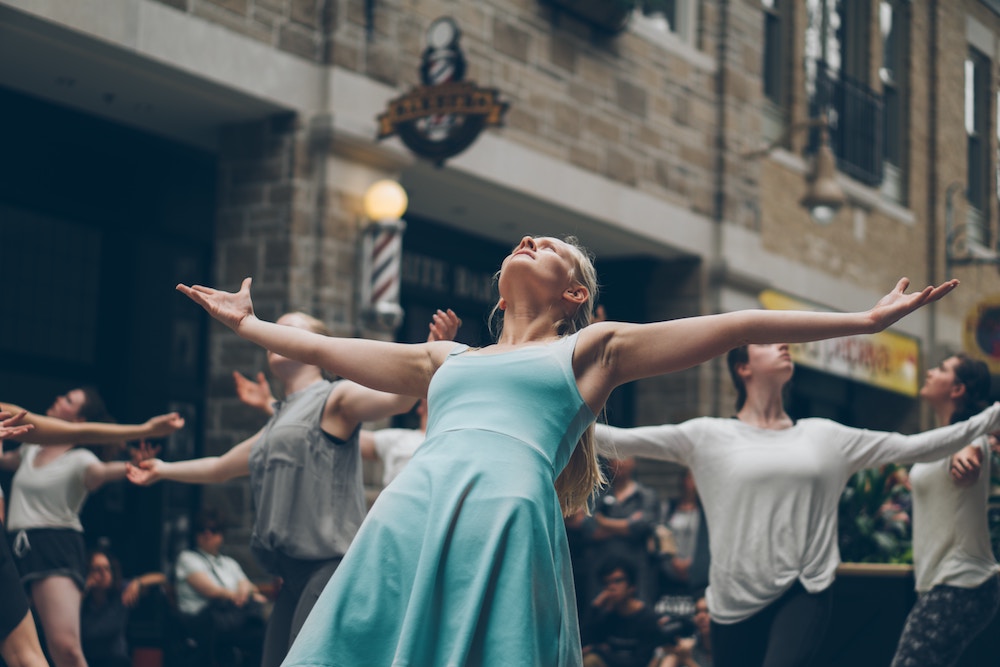Just about everyone loves to dance, even if you have two left feet (i.e. you’re really not a great dancer). Dancing has been practiced for centuries - the first dance forms are believed to be almost 6,000 years old. To celebrate the international Dance Day, we’ve prepared a piece of dance history – is the Viennese Waltz really from Vienna? Which dance is the oldest? Where do the dances’ names come from? Let us take you for a quick journey!
1. Viennese and English Waltz
Country of origin: most likely Austria, but some say Waltz comes from France
There are two most popular types of Waltz: one is English (also known as the “Slow Waltz”) and the other one is Viennese. Most agree that both originated in Austria and the main difference between them can be spotted in their names – the Slow Waltz is half as fast as the Viennese Waltz. In Germany, France, Austria, and the Scandinavian countries, it is believed that the Viennese Waltz was the original, and that’s the one they just call ‘The Waltz’.
Waltz is the oldest of the current ballroom dances and originated in the 18th century. Despite some early voices of indignation (because this dance requires partners to dance very close to each other), Waltz became very popular around Vienna. A couple of years later it came to England and became famous there as well.
Trivia: The name comes from the German “walzen” which means “to roll”.
2. Polka
Country of origin: Czech Republic
Although at a first glance the Polka might be associated with Poland, this dance is actually Czech. It originated in the 19th century and the name most likely comes from Czech “půlka”, which means “half” and is connected with specific types of steps featured in Polka dance. There are a few anthropologists who claim though that the name indeed comes from Polish and means “Polish woman”.
The dance itself is believed to have been inspired by a young woman called Anna Slezáková. She was spotted by her music teacher while dancing in an unknown way, just for fun. In the following years, Polka spread to Vienna and Paris. It became so popular there that London and America quickly caught “Polkomania”. The Polka is considered as a true Czech folk dance.
Trivia: Polka is still very popular in South America, especially in Peru and Curaçao.
3. Belly Dance
Country of origin: Egypt
Belly dancing is believed to be one of the oldest forms of dancing, originating in ancient Egypt. The original name comes from Arabic and literally means “folk, oriental dancing”. Its form is much more free and flexible than most of European dances and is considered as a true performance art throughout the Middle East. It became popular in Europe and North America in the 18th and 19th centuries and it was later captured by popular culture.
Trivia: The modern form of belly dancing is not respected by those who remember its traditional and orthodox form, where women and men (very often separately) danced in groups as a form of celebration.
4. Can Can
Country of origin: France
The Can Can is a very powerful (and exhausting!) dance that originated around 1840s and quickly gained popularity in cabaret performances, most famously at the Moulin Rouge. The Can Can consists of moves such as high kicks, jumps and waving with a skirt with lots of frills. Can Can is said to have emerged from a dance called quadrille, which was a popular dance among the European society in the 18th and 19th centuries. Some of the moves are also believed to come from performances of popular 18th century entertainer and acrobat Charles Mazurier. Initially the dance was perceived as scandalous, given that most Can Can female dancers were probably prostitutes.
Trivia: The Can Can was first danced by both men and women.
5. Twerking
Country of origin: USA
Twerking, having its renaissance today, originated in New Orleans in the 80s. The dance is performed individually, mostly by women (but not only). Twerking is focused mostly on shaking hips and buttocks in a low-squat position in a provocative way. Twerking evolved from hip hop dancing – precisely from a style called Bounce. There is no agreement on what ‘twerk’ is supposed to mean. It can either be mix of words ‘twist’ and ‘jerk’ or a slang shortcut of ‘to work’.
Trivia: Twerking has been used often as a manifesto and throughout the years has been associated with LGBT community and hip-hop culture.

